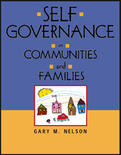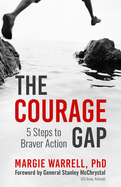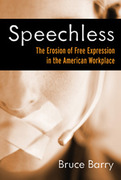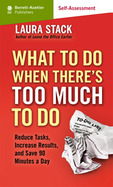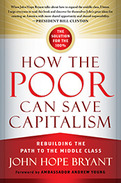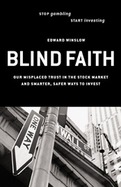We are entering the 21st century in a period of great uncertainty and change. People are wary of government and have lost confidence in social institutions-from social welfare and schools to healthcare programs. That loss of confidence has undermined the community and family life that is the very foundation of our society. Self-Governance in Communities and Families shows how individuals can reconnect to and revitalize their social institutions so that they are effective in serving the needs of all.
Gary Nelson identifies the existing social models we are moving away from and explores the new, emerging pattern of relationships we are shifting to in our social institutions. He reveals why open dialogue and partnerships between people and their social institutions are essential to the well-being of families and thriving communities. He describes why social regeneration is best pursued through these partnerships, with people and stakeholders within communities taking positive action to develop and protect the well-being of their families and the health of their communities.
Applying both business and social science concepts to the day-to-day management of social institutions, Nelson offers a proven, practical method-community self-governance dialogues-for engaging people in the redesign and revitalization of social institutions. The author shows how-by creating opportunities for individuals and families to proactively participate in developing a strategic plan for how their institutions are managed, run, and evaluated-this dialogue method ultimately empowers people to take control of their own lives. He also reveals how active participation in these open dialogues ignites creative ideas and new energy for the redirection and reshaping of those institutions.
With numerous examples and anecdotes, Nelson illustrates the values, beliefs, and principles that underlie how we learn and make decisions in a self-governing democratic culture. He provides tips for shared learning and accountability, ownership and governance, and the creation of a culture of self-governance. And he offers advice on how to maintain an ongoing engagement and partnership between the public and its social institutions.
Communities and families can be strengthened when each of us takes responsibility for ourselves and works in partnership with others to restore our social institutions. Self-Governance in Communities and Families sets forth clear, doable strategies for fostering both responsibility and ownership through dialogue and collaboration between public and private sectors.
- Provides community leaders and others with a framework for bringing all parts of a community and the "system" together around the common purpose of strengthening communities and families
- Outlines a philosophy of self-governance and empowerment for at-risk families, individuals, and neighborhood communities
- Offers managers a dynamic, adaptive model for opening up, supporting, and steering the process of social change
2025
The Courage Gap offers on-point leadership advice.—Kirkus Reviews
Do you sometimes hold back when you know you need to speak up or step forward?
Fear creates the gap. Courage closes it.
This powerful guide from the bestselling author of You've Got This! cuts through the hype to connect the 'why' of courage to the 'how' of courage. Drawing on cutting-edge research woven together with stories that compel head and heart, The Courage Gap will help you bridge the think/do gap between what you've been doing and what you can do; between where you are and where you want to be-in your career, relationships, leadership, and life.
Distilling theory and hard-won wisdom spanning from Margie's childhood in rural Australia to her decades of living around the world and coaching ‘insecure overachievers' in Fortune 500 organizations, Margie shares a powerful 5-step roadmap to reprogram the self-protective patterns of thought and behavior that sabotage success to bring your bravest self to your biggest challenges and boldest vision.
At a time when courage seems in short supply, in a culture continually stoking insecurity and anxiety, this book will transform your deepest fears into a catalyst for your highest growth and the greatest good.
Applying the five steps will:
• Ignite passion and unlock the potential fear holds dormant
• Rewrite the scripts that have kept you stuck, stressed, and living too safely
• Reset your ‘nervous' system and embody courage in critical moments
• Transform discomfort as a cue to step forward and expand your bandwidth for bold action
• Reset your relationship to failure and make peace with the part of you that wimps out
For leaders, The Courage Gap provides a guide to operationalize and scale the courage mindset across your team and organization to deepen trust, dismantle silos, foster innovation, accelerate learning, and unleash collective courage toward a more secure and rewarding future.
2007
- Reveals the severe--and surprising--limits on free speech in the American workplace
- Includes vivid examples illustrating just how restricted workplace speech has become
- Suggests ways to expand employee rights while protecting employers' legitimate concerns
- Learn more at www.SpeechlessTheBook.com
Product: Online streamed self-assessment application (not downloaded), limited one-year subscription (5 tests or 12 months, whichever comes first), password controlled
Duration: 30 questions in six categories: 1) Reduce Your To-Do List, 2) Reduce Your Obligations, 3) Reduce Your Distractions, 4) Reduce Incoming Information, 5) Reduce Inefficiencies, and 6) Reduce Energy Expenditures. The self-assessment takes 10-15 minutes to answer.
Results: The radar graph and score chart display six scores according to the six major chapters of the book: 1) Determine What to Do, 2) Schedule Time to Do It, 3) Focus Your Attention, 4) Process New Information, 5) Close the Loop, and 6) Manage Your Capacity. The results include interpretation from author, summaries of the Productivty Workflow Formula components, follow-up questions to consider based on scores, author's closing statement, and print option.
BASED ON THE BOOK: Look at your to-do list. It's ridiculous. You can't get all that done. You're already at capacity. And it probably doesn't even list every single thing you need to do. The last thing you want to do is more. As a skeptical audience member once told author Laura Stack before a presentation, "I don't want to hear a productivity consultant telling me to do more with less. I want to do less and achieve more."
This is exactly what Stack offers. You're never going to save time and increase efficiency by adding more to your bloated list. You need a system: a comprehensive approach that will enable you to organize your life around the tasks that really matter and let go of the ones that don't. Stack's innovative, step-by-step Productivity Workflow Formula allows you to spend less time and achieve greater results than you ever thought possible. By following her logical and intuitive process, you can wrestle your schedule into submission. Ultimately, you can recover as much as ninety minutes of your day (or even more) to use as you see fit.
Stack shows how to separate the productive wheat from the nonproductive chaff-to home in on the high-value tasks, protect the time to do them, and focus on their execution. Throughout this book, you'll learn how to scale back; reduce, reduce, reduce is Stack's mantra. You'll find dozens of ways to shrink your to-do list, calendar commitments, distractions, interruptions, information overload, inefficiencies, and energy expenditures. Each reduction will increase your results and save you time.
You know you can't work any harder-if you want to accomplish more, you have to work differently. Let Laura Stack show you how you can keep your sanity, advance your career, and spend more time with your family and friends.
PURCHASER AND USER NOTE: If you are an individual consumer newly purchasing the assessment, go directly to the shopping cart by clicking the "add to cart" icon to your left. If you are a member of an organization that has purchased a bulk order, or if you already bought the assessment in the last 12 months and are retaking it now using the original Access Key to retake the assessment please log in here. New registrants: Please enter your "Access Key" into the input field to enter the self-assessment for the first time. A note to frequent purchasers: You cannot use your current bkconnection.com password for this product; you must create and use a new password. For any questions, please contact the support desk at 800-929-2929 (8 am-9 pm Eastern U.S. time, Monday through Friday), or [email protected]. Thank you.
Raised in poverty-stricken, gang-infested South Central Los Angeles, Bryant saw firsthand how our institutions have abandoned the poor. He details how business loans, home loans, and financial investments have vanished from their communities. After decades of deprivation, the poor lack bank accounts, decent credit scores, and any real firsthand experience of how a healthy free enterprise system functions.
Bryant radically redefines the meaning of poverty and wealth. (It's not just a question of finances; it's values too.) He exposes why attempts to aid the poor so far have fallen short and offers a way forward: the HOPE Plan, a series of straightforward, actionable steps to build financial literacy and expand opportunity so that the poor can join the middle class.
Fully 70 percent of the American economy is driven by consumer spending, but more and more people have too much month at the end of their money. John Hope Bryant aspires to “expand the philosophy of free enterprise to include all of God's children” and create a thriving economy that works not just for the 1 percent or even the 99 percent but for the 100 percent. This is a free enterprise approach to solving the problem of poverty and raising up a new America.
2003
• Establishes that investing in common stock or equity mutual funds is riskier than ever and that traditional methods used by investment professionals to control this risk do not provide adequate protection against loss.
• Shows that the real winners in the stock market are the executives, corporations and the brokerage industry. The potential rewards are so enticing that the behavior of these "beneficiaries" of market advances can range from unethical transgressions to outright fraud.
• Presents a logical and common sense strategy for safeguarding investments in the market against loss in bad times while providing for participation in the gains when times are good. These attractive investment options are rarely discussed in mainstream financial literature. They are described in detail and offer a smarter and safer course for the more than 40% of households that own some form of common stock.


